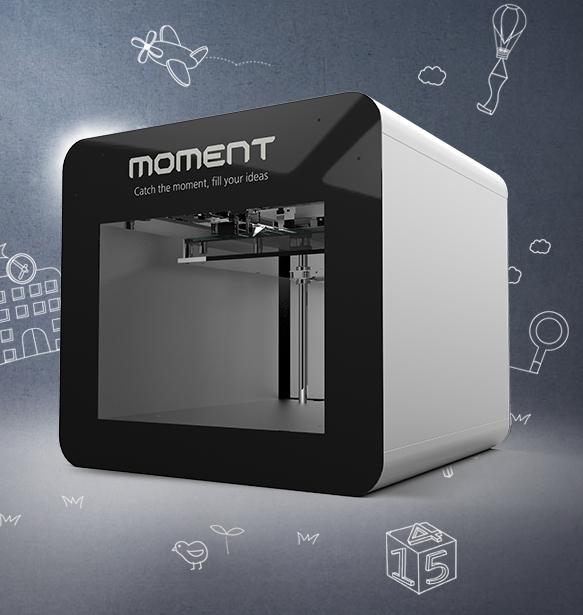I am Inbo Song, the CEO of 3DGURU, which provides information about global trends, related technology, case studies, and 3D printing news to users in South Korea, as well as provides 3D printing consulting services and sells 3D printers and scanners. In 2019, 3DPrint.com, gave me an opportunity to glance at the status of 3D printing in Korea. In this article, I intend to cast light upon Korean government’s plans for support and investments for the 3D printing industry, and give a brief description of 3D printing sales in the first half of 2021.
The Prime Minister of South Korea held the 12th Information and Communication Strategy (ICT) Committee in June 2020 to discuss the 2nd Basic Plan for 3D Printing Industry Promotion along with four other issues. The Ministry of Science and ICT is required to establish “a basic plan for the promotion of the 3D printing industry” every three years in accordance with Article 5 of the 3D Printing Industry Promotion Act, so a new three-year plan (2020-2022) was announced at this meeting
The three main points of the plan were:
1. to extend the range of the application of 3D printing technology to include various private markets, such as the medical field;
2. to secure advanced 3D printing technologies, such as the ones related to hardware (H/W), software (S/W), materials, and processes through R&D;
3. to improve the business environment and education of the 3D printing industry, which is currently centered on many small- and medium-sized enterprises and specialized companies.
The expected effects are the expansion of the domestic market, growth of 3D printing companies, and strengthening of technological competitiveness.
The Korean 3D Printing Market, 2020
The Korean 3D printing market size in 2020 was about $348 million, a reduction of 17% compared to 2019. As expected, the main factor for this decrease is regarded to be the COVID-19 pandemic. All sectors showed decline as illustrated below.
Source : Korean National IT Industry Promotion Agency (NIPA)
The market share by industry is highest in the public sector, followed by the automotive, medical, and general machinery industries. The public sector includes the central government, local governments, research, and education institutes.
The market share of domestic and imported 3D printers were 46.2% and 53.8%, respectively. As for Desktop 3D printers, domestic products sold more than the imported, while as to industrial ones, the sales of the imported were relatively higher. The usages of 3D printers were, in order, making prototypes, education, research, and manufacturing finished products. The biggest benefit was reduced product development time.
Then, what were the main obstacles to 3D printing adoption by Korean companies? They are shown below.
Korea’s 2021 Plan for 3D Printing Promotion
The Korean government announced its intention to invest about USD$86 million in the 3D printing industry in 2021. $19 million will be allocated to accelerating the practical use of 3D printing, $20 million to securing advanced technology, and $46 million to establishing the industrial foundation for innovation-driven growth.
The Korean government is attempting to develop the 3D printing industry in the country by distributing its financial support to various government departments. The measures include funding different industry groups, educational support, encouraging technology development, and manpower training. However, more practical support measures for SMEs are needed.
3D Printing Sales Performance for H1 2021
Although sales performance data has not yet been collected, Korea’s 3D printer sales performance in the first half of 2021 is expected to be poor overall. Korea’s export performance for the same period not only overcame the various difficulties caused by the COVID-19 pandemic situation, but also reached an all-time high. However, South Korea’s domestic market has not yet recovered. It is very likely that the biggest reason for the sluggish sales is the slump in the domestic market due to COVID-19 pandemic.
Most countries around the world recorded negative economic growth in 2020 due to the pandemic. Korea’s economic growth rate in 2020 was -1%, the best record among OECD countries, and the financial debt of the Korean government is not as bad as the other OECD countries. Therefore, I hope that the Korean government will implement a more active policy to revitalize the domestic market.
Subscribe to Our Email Newsletter
Stay up-to-date on all the latest news from the 3D printing industry and receive information and offers from third party vendors.
You May Also Like
Gorilla Sports GE’s First 3D Printed Titanium Cast
How do you help a gorilla with a broken arm? Sounds like the start of a bad joke a zookeeper might tell, but it’s an actual dilemma recently faced by...
Nylon 3D Printed Parts Made More Functional with Coatings & Colors
Parts 3D printed from polyamide (PA, Nylon) 12 using powder bed fusion (PBF) are a mainstay in the additive manufacturing (AM) industry. While post-finishing processes have improved the porosity of...
$25M to Back Sintavia’s Largest Expansion of Metal 3D Printing Capacity Since 2019
Sintavia, the digital manufacturing company specializing in mission-critical parts for strategic sectors, announced a $25 million investment to increase its production capacity, the largest expansion to its operations since 2019....
Velo3D Initiates Public Offering in a Bid to Strengthen Financial Foundations and Drive Future Growth
Velo3D (NYSE: VLD) has been among a number of publicly traded 3D printing firms that have attempted to weather the current macroeconomic climate. After posting a challenging financial report for 2023,...
































